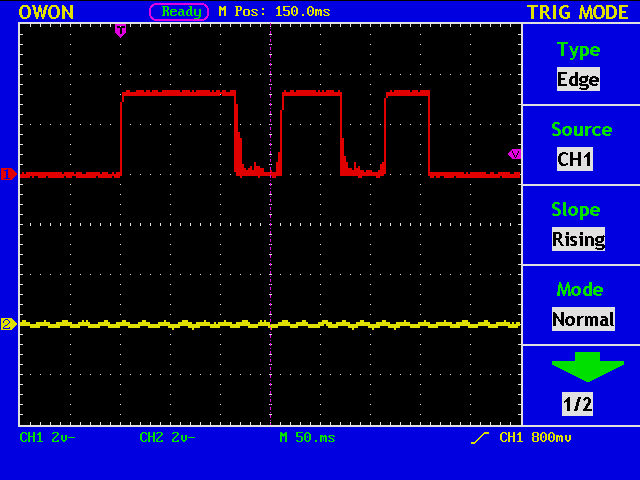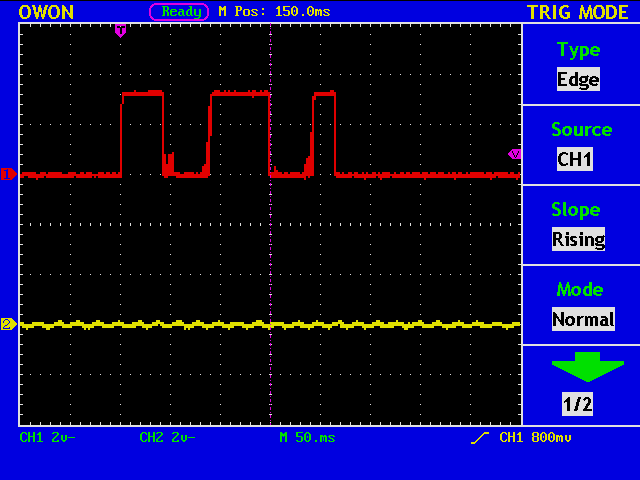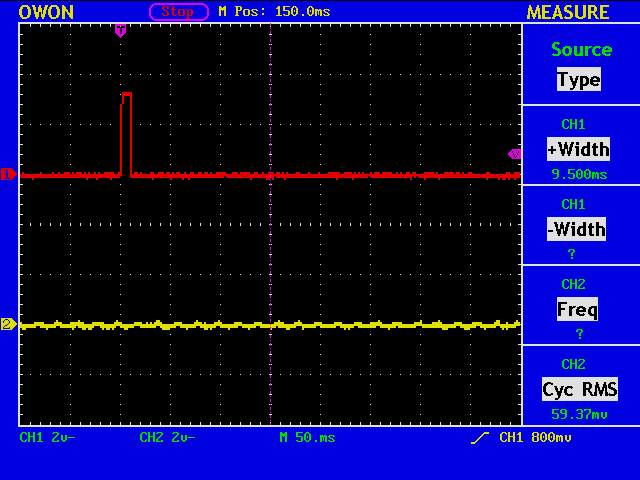So my assumption is that you can start your dash immediately if you can move your finger (and the dash lever) fast enough, but not so with your dot because there is a weight which hinders the quick closure of the contact.
The red trace shows the contact closure, but this time the dash contact is adjusted so that it is closed when the lever is in its neutral position. So what you see is:
- Low: the lever is in neutral and the dash contact is closed.
- High: you start moving your thumb, the dash contact immediately opens, but the dot contact is still open.
- Low: dot is generated.
- High: dot space.
- Low: one more dot.
- High: another dot space.
- Low: the lever released, and the dash contact closed again.
The duration of (2.) is determined by both the speed of your thumb and the time constant of the oscillation of the weight.
This time I moved my finger much faster, but the time required to move the weight from its initilal position to the place close enough to close the dot contact is the same, thus suggesting the duration of (2.) is lower bounded.
This figure shows the delay from the time your start moving your finger to the time the dash contact closes. For the measurement purposes, a grounded contact to detect the lever being in its neutral position is temporarily employed. The delay in this case is 9.5 mS. It depends on the size of the gap and how fast you move the finger, but anyway you will see that the delay is relatively small.



